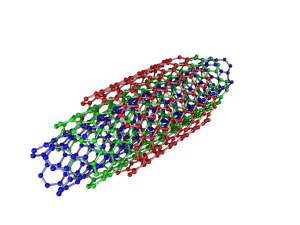Pleural Mesothelioma: The Cause May Impact the Outcome
 There is new evidence that the substance that causes a case of pleural mesothelioma may have an impact on the outcome of that case.
There is new evidence that the substance that causes a case of pleural mesothelioma may have an impact on the outcome of that case.
Although asbestos is the primary cause of most mesothelioma, carbon nanotubes are emerging as another possible mesothelioma risk because of their similarities to asbestos.
A new study comparing the two toxic substances suggests that there are differences in the way the body reacts to them and these differences may affect mesothelioma survival.
Exposure to Fibers and Mesothelioma Risk
There are several reasons why asbestos appears to lead to serious illnesses like malignant mesothelioma, lung cancer, and asbestosis. Most of them have to do with the shape of the fibers.
Microscopic fibers of asbestos are slender and sharp and they tend to lodge in the tissue once they are inhaled, making it difficult for the body to get rid of them.
Because carbon nanotubes (CNTs) are a similar shape, they, too, tend to stay in the body long term, triggering irritation and inflammation, both of which are known precursors of pleural mesothelioma.
Mesothelioma Causes and Impacts
To see how CNTs and crocidolite asbestos may trigger mesothelioma, researchers at the University of Cincinnati and the National Institute for Occupational Safety and Health exposed healthy mice to both substances, repeatedly.
Both types of exposure resulted in inflammation and an increase in the production of collagen by the lung cells.
But, while the asbestos caused precancerous cellular changes in both the bronchial tubes and the alveoli, the CNTs affected primarily alveolar cells.
“These results suggest related but distinct mechanisms of action by CNTs versus asbestos which may lead to different outcomes in the 2 exposure types,” writes study author Vinicius Carreira a pathologist formerly with the University of Cincinnati’s Department of Environmental Health.
Mesothelioma and Asbestos
Historically, asbestos has been the toxin most closely associated with mesothelioma.
Once heavily used in construction products, automobiles, trains, ships, and even Christmas decor, asbestos has been banned in many countries and regulated in others since its link to mesothelioma was uncovered in the 1960s.
Today, asbestos can be found in thousands of older homes and buildings. The EPA regulates how it is handled and disposed of to minimize mesothelioma risk to workers and the public.
Carbon nanotubes are manufactured cylinders of carbon atoms that are used in electronics, optics and to strengthen things like baseball bats, golf clubs, and car parts.
Source:
Frank, EA, et al, “Carbon nanotube and asbestos exposures induce overlapping but distinct profiles of lung pathology in non-swiss albino CF-1 mice”, February 2, 2016, Toxicology and Pathology





